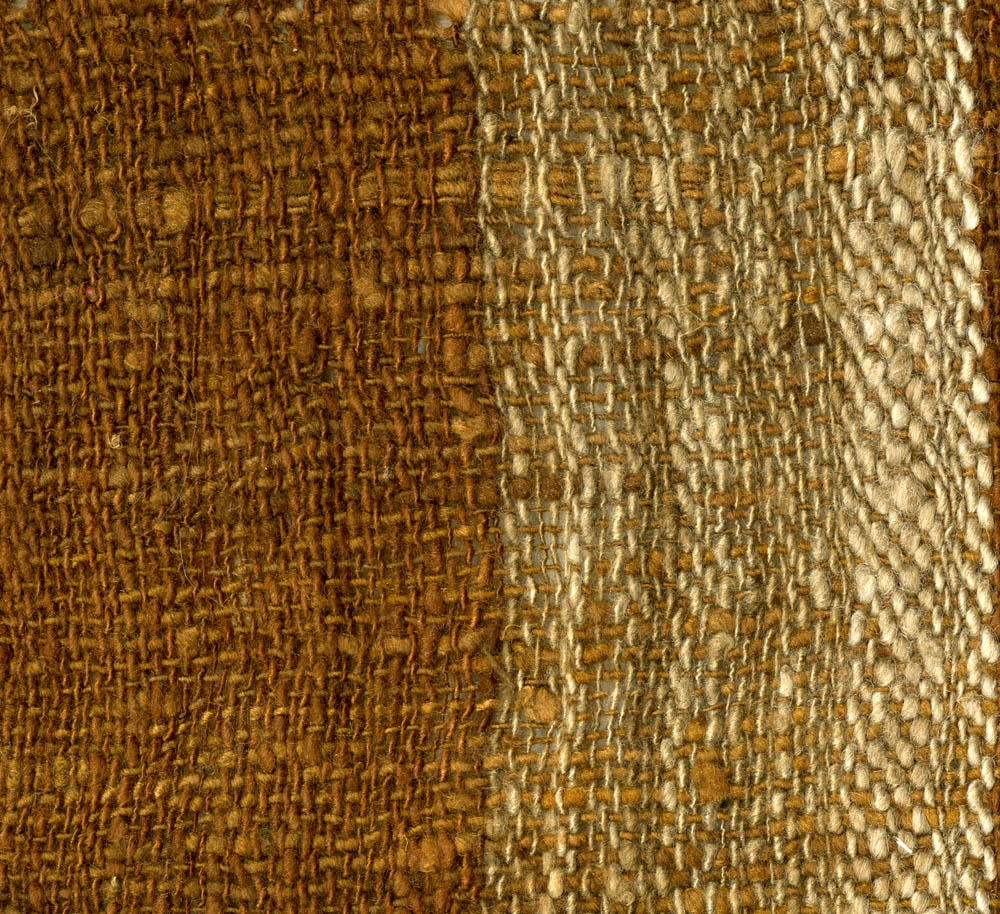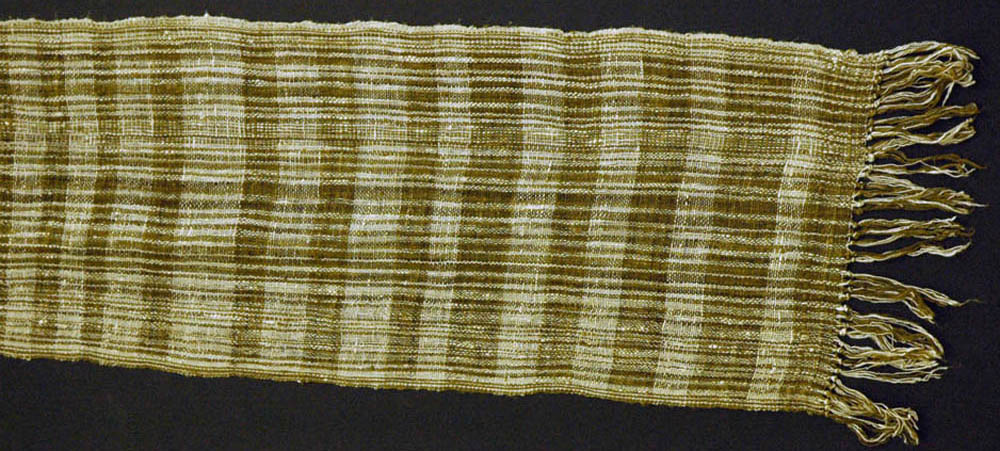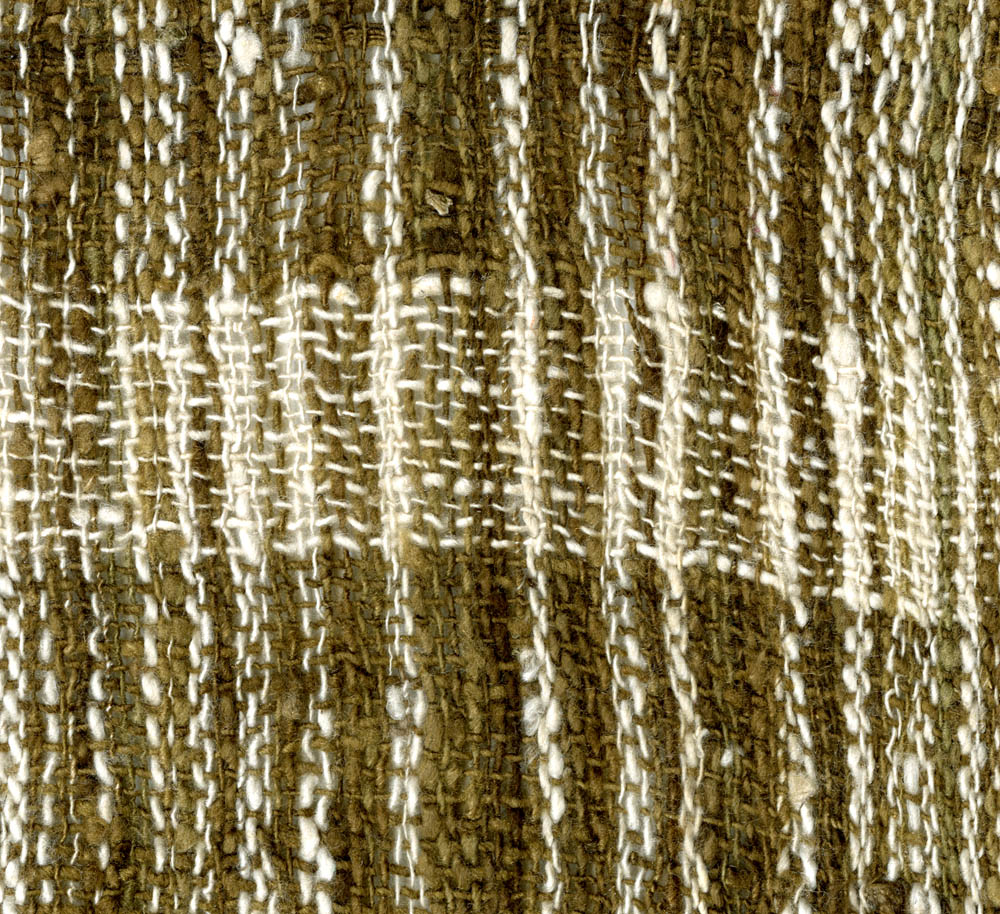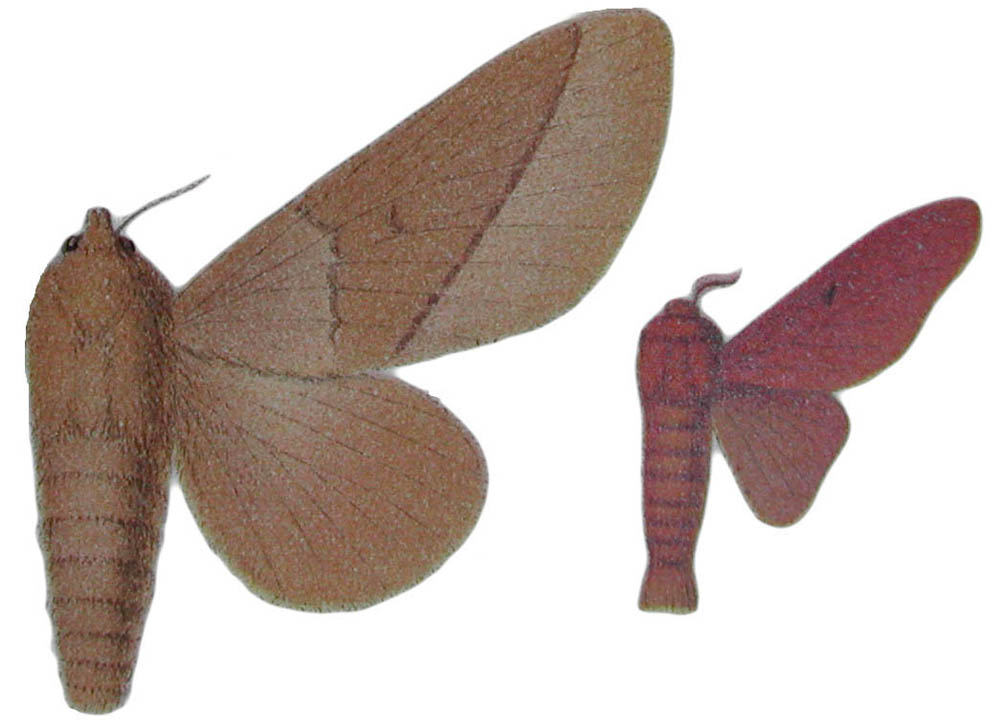Borocera sp.
Landibé Silk
Moths of the genus Borocera make large oval cocoons that are used to produce silk known locally as landibé. Several species of moths are used, and it is generally not possible to determine the exact species of silk in these textiles. Found only in Madagascar, the Borocera are small brownish moths related to Gonometa on the African mainland (Aurivillius 1927, de Lajonquière 1972). Peigler (2004) summarized the entomological literature on these moths and cited their known localities and foodplants. Larvae of Borocera were illustrated in color by Zethner et al. (2008).
Chapters in the book containing the one by Peigler (2004) describe the history and culture of how landibé silk has been used in Malagasy society, and several pieces are illustrated. Traditionally the Betsileo and Merina, two tribes in the Central Highlands, exploited this wild silk, primarily to be used as burial shrouds. Many historical textiles composed of landibé silk are in museums in London, Paris, and the Field Museum of Natural History in Chicago. In the last several years, small coops of women in central Madagascar began to collect, spin, and weave this silk on a small scale, making hundreds beautiful pieces, mostly scarves and shawls, available now to textile enthusiasts around the world.
These textiles have patterns that are almost always warp dominant, but one of the ones we show has some stripes created by weft yarns. Most of the scarves are various earth-tones, and their colors were produced mostly from natural plant dyes, or other natural products such as mud or charcoal. PeaceGoods in North Carolina is a fair-trade and non-profit organization that imports and markets these scarves for the women who make them. Why would anyone want a “designer scarf” of which there are hundreds of identical copies, when she can have a unique and handcrafted creation like one of these weavings that mirrors the history and traditions of an indigenous culture?
Description: Scarf of landibé silk (Borocera sp., Lasiocampidae) from Madagascar. Hand spun and hand-woven by young women in village of Soatanana, in highland region of Ambositra. Rust color from a natural plant dye; beige stripes are the natural silk color. Warp-face type of weave. Purchased in January 2009 by mail order. Production Location: Soatanana, Madagascar Measurement: |
||
Description: Scarf of landibé silk (Borocera sp., Lasiocampidae) from Soatanana, Madagascar. Purchased by mail order in August 2009. Handspun yarns hand-woven by women in Kaoperativa Firaisankina (Solidarity Cooperative), founded in 2003. The silk is natural colored, but some portions are dyed with a natural dye. Production Location: Soatanana, Madagascar Measurement: |
Borocera Moths
Borocera madagascarensis |
References
Aurivillius, P. O. C.. 1927. Lasiocampidae, pp. 265-282, plates 29-40, in A. Seitz,
editor, The Macrolepidoptera of the world, vol. 14: The African Bombyces & Sphinges.
Alfred Kernen Publisher, Stuttgart. 600 pp., 80 color plates.
Kreamer, Christine Mullen & Sarah Fee, editors. 2002. Objects as envoys: cloth, imagery, and
diplomacy in Madagascar. National Museum of African Art, Washington, D.C. and
University of Washington Press, Seattle. 205 pp.
Lajonquière, Y. de 1972. Fascicle 34: Insectes Lépidoptères Lasiocampidae in Faune de
Madagascar. Centre National de la Recherche Scientifique & l'Office de la Recherche
Scientifique et Technique Outre-Mer, Paris. 214 pp., 28 plates.
Peigler, R. S. 2004. Chapter 10: The silkmoths of Madagascar, pp. 154-163, in C. M.
Kusimba, J. C. Odland, and B. Bronson, editors, Unwrapping the textile traditions of
Madagascar. Field Museum, Chicago, and UCLA Fowler Museum of Cultural History,
Los Angeles. 196 pp.
Zethner, O., R. Koustrup & S. K. Raina. 2008. African ways of silk: ancient threads—new
possibilities. Centre for Advanced Studies of African Society, Cape Town. 88 pp.







